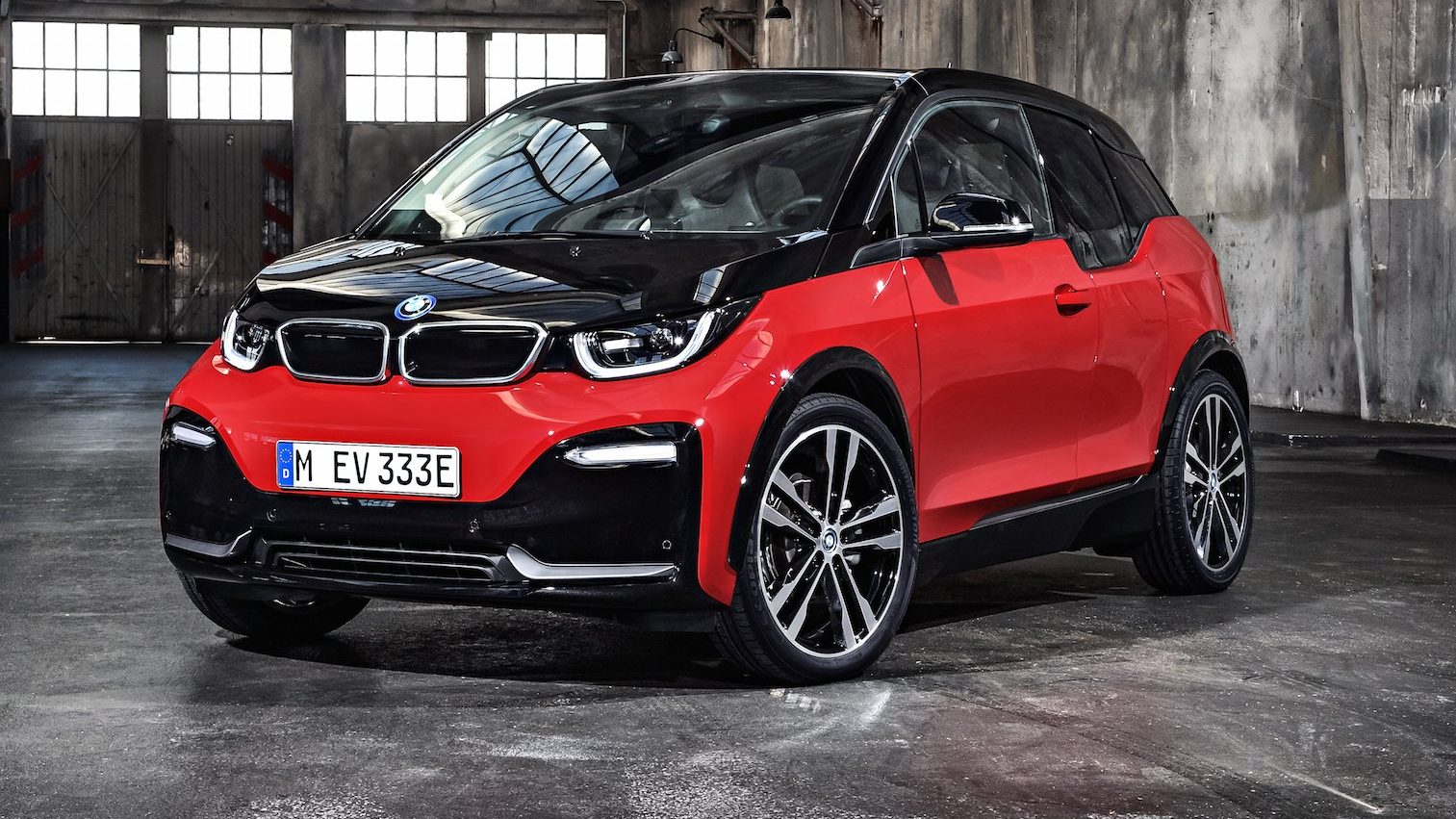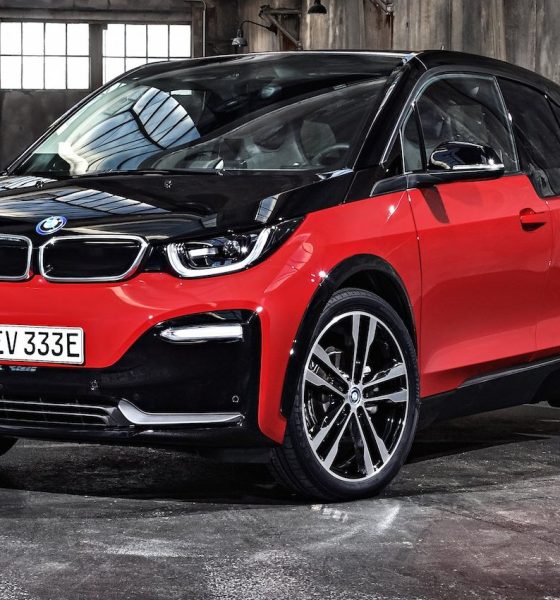

News
BMW CEO denies competition from rivals like Tesla: ‘There is no real newcomer’
New BMW CEO Oliver Zipse might be willing to save the company’s only all-electric vehicle, but he appears to be strangely dismissive about the efforts of rival automakers, particularly American electric vehicle maker Tesla and other emerging carmakers from regions such as China.
BMW has a new CEO, and with his appointment, the German carmaker has a chance to recapture lost ground in the emerging electric car market that was taken over by rivals during the days of its previous CEO, Harald Krüger. Unlike his predecessor, new BMW CEO Oliver Zipse appears to be far more progressive with regards to electric cars in general.
In a recent interview with German news outlet Frankfurter Allgemeine Sonntagszeitung, Zipse stated that contrary to speculations and even the statements of BMW AG Board of Management member Pieter Nota, the all-electric BMW i3 will not be killed off. The curiously-designed electric vehicle will live on, and it will continue to be improved in years to come.
“The i3 will continue to be produced, no question about it. The car is already an icon today. Which car can claim this after only six years? Icons tick according to a different logic, they don’t have a classic successor, they always remain true to themselves in essence. Today, the i3 is more in demand than ever and will make another leap in battery and operating concepts,” he said.
Yet, despite these rather encouraging statements, the new CEO appeared notably confident about the company’s chances in the auto segment in the coming years, even stating during an interview with news media outlet Emobly that he sees BMW being “well-positioned” for the future. When asked by the news outlet about competition from upstart companies, Zipse proved quite dismissive. “There is no real newcomer,” he stated.
In an article outlining its interview, the Emobly team noted that the new BMW CEO’s statements were quite surprising, especially considering that companies like Tesla have emerged as leaders in their own right. The American electric car maker, for one, holds an undeniable lead in the premium electric vehicle market, so much so that the gap between the BMW i3 and Tesla Model 3 is very notable. And it’s not just Tesla either, as other companies from China such as BYD and SAIC’s MG brand are capturing the interest of the electric car market with affordable EVs like the electric MG ZS.
Overall, BMW enthusiasts could at least rest assured that the i3 will remain in production. For his part, the CEO believes that the i3 is still among the leaders in its segment, calling it one of the “most innovative” vehicles in the world. “The i3 remains the most innovative mass-production vehicle in the world due to its design. Investments are written off, we earn money with every i3. Why in God’s name should we give up this car that is now at the height of its time? We are sure: The i3 still has great potential!” he said.
Yet, for all of Zipse’s stance on the i3 and his dismissive nature against competitors, it would be wise for BMW to accelerate its electric vehicle initiatives. The BMW i3, after all, is a seven-year-old city car that is, in more ways than one, a product of its time. The EV segment is now in the era of the Tesla Model 3 and the Volkswagen ID.3, and vehicles in this era simply offer so much more tech and range at a far more reasonable cost.

Elon Musk
Starlink passes 9 million active customers just weeks after hitting 8 million
The milestone highlights the accelerating growth of Starlink, which has now been adding over 20,000 new users per day.

SpaceX’s Starlink satellite internet service has continued its rapid global expansion, surpassing 9 million active customers just weeks after crossing the 8 million mark.
The milestone highlights the accelerating growth of Starlink, which has now been adding over 20,000 new users per day.
9 million customers
In a post on X, SpaceX stated that Starlink now serves over 9 million active users across 155 countries, territories, and markets. The company reached 8 million customers in early November, meaning it added roughly 1 million subscribers in under seven weeks, or about 21,275 new users on average per day.
“Starlink is connecting more than 9M active customers with high-speed internet across 155 countries, territories, and many other markets,” Starlink wrote in a post on its official X account. SpaceX President Gwynne Shotwell also celebrated the milestone on X. “A huge thank you to all of our customers and congrats to the Starlink team for such an incredible product,” she wrote.
That growth rate reflects both rising demand for broadband in underserved regions and Starlink’s expanding satellite constellation, which now includes more than 9,000 low-Earth-orbit satellites designed to deliver high-speed, low-latency internet worldwide.
Starlink’s momentum
Starlink’s momentum has been building up. SpaceX reported 4.6 million Starlink customers in December 2024, followed by 7 million by August 2025, and 8 million customers in November. Independent data also suggests Starlink usage is rising sharply, with Cloudflare reporting that global web traffic from Starlink users more than doubled in 2025, as noted in an Insider report.
Starlink’s momentum is increasingly tied to SpaceX’s broader financial outlook. Elon Musk has said the satellite network is “by far” the company’s largest revenue driver, and reports suggest SpaceX may be positioning itself for an initial public offering as soon as next year, with valuations estimated as high as $1.5 trillion. Musk has also suggested in the past that Starlink could have its own IPO in the future.
News
NVIDIA Director of Robotics: Tesla FSD v14 is the first AI to pass the “Physical Turing Test”
After testing FSD v14, Fan stated that his experience with FSD felt magical at first, but it soon started to feel like a routine.

NVIDIA Director of Robotics Jim Fan has praised Tesla’s Full Self-Driving (Supervised) v14 as the first AI to pass what he described as a “Physical Turing Test.”
After testing FSD v14, Fan stated that his experience with FSD felt magical at first, but it soon started to feel like a routine. And just like smartphones today, removing it now would “actively hurt.”
Jim Fan’s hands-on FSD v14 impressions
Fan, a leading researcher in embodied AI who is currently solving Physical AI at NVIDIA and spearheading the company’s Project GR00T initiative, noted that he actually was late to the Tesla game. He was, however, one of the first to try out FSD v14.
“I was very late to own a Tesla but among the earliest to try out FSD v14. It’s perhaps the first time I experience an AI that passes the Physical Turing Test: after a long day at work, you press a button, lay back, and couldn’t tell if a neural net or a human drove you home,” Fan wrote in a post on X.
Fan added: “Despite knowing exactly how robot learning works, I still find it magical watching the steering wheel turn by itself. First it feels surreal, next it becomes routine. Then, like the smartphone, taking it away actively hurts. This is how humanity gets rewired and glued to god-like technologies.”
The Physical Turing Test
The original Turing Test was conceived by Alan Turing in 1950, and it was aimed at determining if a machine could exhibit behavior that is equivalent to or indistinguishable from a human. By focusing on text-based conversations, the original Turing Test set a high bar for natural language processing and machine learning.
This test has been passed by today’s large language models. However, the capability to converse in a humanlike manner is a completely different challenge from performing real-world problem-solving or physical interactions. Thus, Fan introduced the Physical Turing Test, which challenges AI systems to demonstrate intelligence through physical actions.
Based on Fan’s comments, Tesla has demonstrated these intelligent physical actions with FSD v14. Elon Musk agreed with the NVIDIA executive, stating in a post on X that with FSD v14, “you can sense the sentience maturing.” Musk also praised Tesla AI, calling it the best “real-world AI” today.
News
Tesla AI team burns the Christmas midnight oil by releasing FSD v14.2.2.1
The update was released just a day after FSD v14.2.2 started rolling out to customers.

Tesla is burning the midnight oil this Christmas, with the Tesla AI team quietly rolling out Full Self-Driving (Supervised) v14.2.2.1 just a day after FSD v14.2.2 started rolling out to customers.
Tesla owner shares insights on FSD v14.2.2.1
Longtime Tesla owner and FSD tester @BLKMDL3 shared some insights following several drives with FSD v14.2.2.1 in rainy Los Angeles conditions with standing water and faded lane lines. He reported zero steering hesitation or stutter, confident lane changes, and maneuvers executed with precision that evoked the performance of Tesla’s driverless Robotaxis in Austin.
Parking performance impressed, with most spots nailed perfectly, including tight, sharp turns, in single attempts without shaky steering. One minor offset happened only due to another vehicle that was parked over the line, which FSD accommodated by a few extra inches. In rain that typically erases road markings, FSD visualized lanes and turn lines better than humans, positioning itself flawlessly when entering new streets as well.
“Took it up a dark, wet, and twisty canyon road up and down the hill tonight and it went very well as to be expected. Stayed centered in the lane, kept speed well and gives a confidence inspiring steering feel where it handles these curvy roads better than the majority of human drivers,” the Tesla owner wrote in a post on X.
Tesla’s FSD v14.2.2 update
Just a day before FSD v14.2.2.1’s release, Tesla rolled out FSD v14.2.2, which was focused on smoother real-world performance, better obstacle awareness, and precise end-of-trip routing. According to the update’s release notes, FSD v14.2.2 upgrades the vision encoder neural network with higher resolution features, enhancing detection of emergency vehicles, road obstacles, and human gestures.
New Arrival Options also allowed users to select preferred drop-off styles, such as Parking Lot, Street, Driveway, Parking Garage, or Curbside, with the navigation pin automatically adjusting to the ideal spot. Other refinements include pulling over for emergency vehicles, real-time vision-based detours for blocked roads, improved gate and debris handling, and Speed Profiles for customized driving styles.








